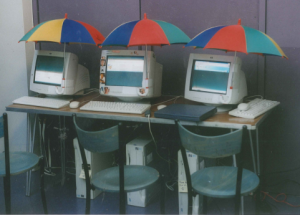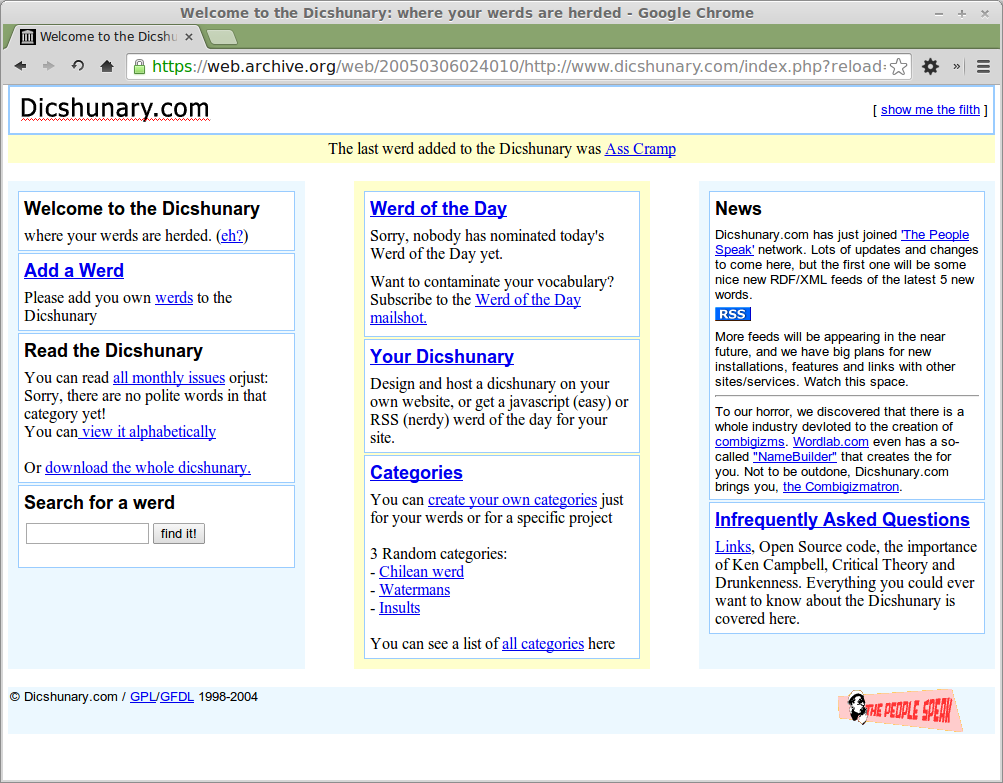The Dicshunary collected and shared vocabularies used by one person, family, or other micro-language group.
Users added their neologisms, definitions and redefinitions, and could create sub-lexicons to host on their own websites. They could even download the code and run their own version.
 Installed as a kiosk on recycled computers reclaimed from local skips, dumps and store cupboards, the Dicshunary would capture local place names and micro-dialects from areas near the galleries, schools and public spaces in which it was exhibited.
Installed as a kiosk on recycled computers reclaimed from local skips, dumps and store cupboards, the Dicshunary would capture local place names and micro-dialects from areas near the galleries, schools and public spaces in which it was exhibited.
Credits & Links
- Version 1 developed with Jonathan Hirsch.
- Version 2 Commissioned by Waterman’s Gallery.
- TAnha and Dr. Pantagon for discovering and publishing the security vulnerability that got the Dicshunary hacked to pieces in 2004.
- Jeremy Ruston for his Mimic word generator.
- Ade Ward for building the dicshunary into Auto-illustrator‘s text tool.
- Wordlab.com for inspiring the (still working!) Combigizmatron.
